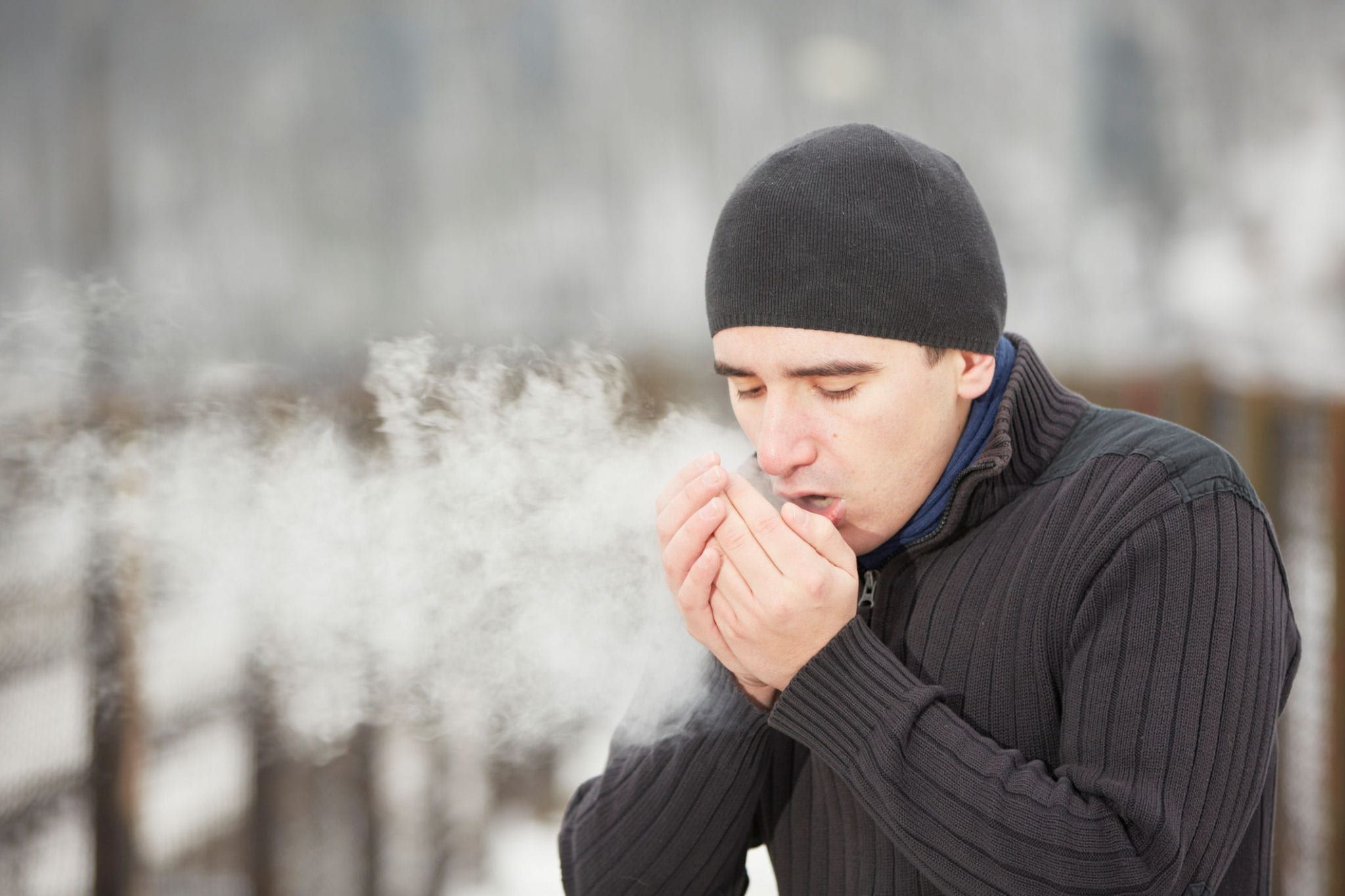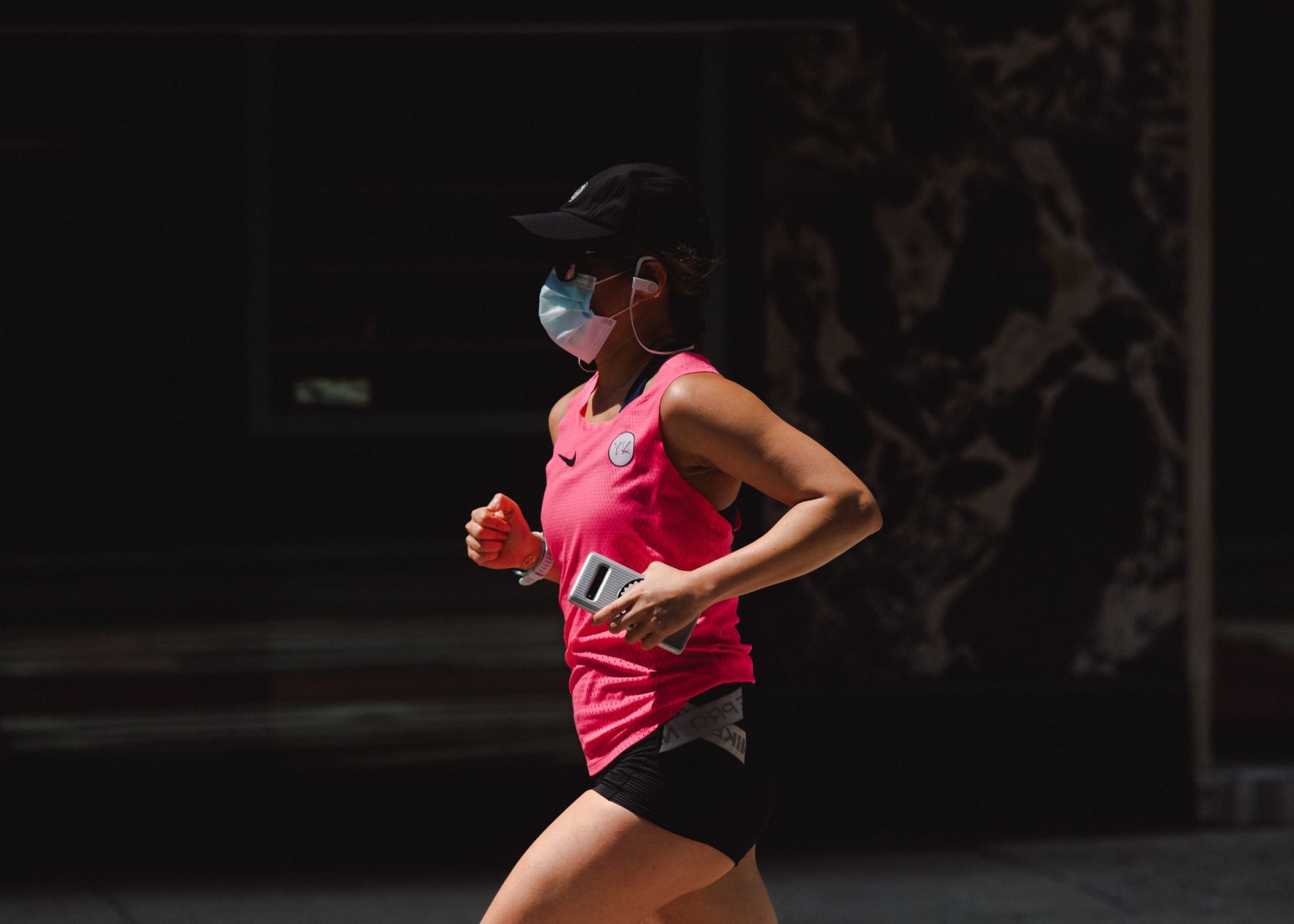Home>Health & Nutrition>The Impact Of Cold Air On Breathing


Health & Nutrition
The Impact Of Cold Air On Breathing
Published: February 21, 2024
Learn how cold air affects breathing and discover tips for managing its impact on your health and nutrition. Understand the connection between cold air and respiratory health.
(Many of the links in this article redirect to a specific reviewed product. Your purchase of these products through affiliate links helps to generate commission for Therunningadvisor.com, at no extra cost. Learn more)
Table of Contents
Introduction
Cold air can have a significant impact on our respiratory system, affecting our breathing in various ways. As the temperature drops, the air becomes denser, causing it to contain less moisture. This change in air composition can lead to challenges for individuals, particularly those with pre-existing respiratory conditions. Understanding the effects of cold air on breathing is crucial for taking proactive measures to mitigate its impact and safeguard our respiratory health.
In the following sections, we will delve into the intricate relationship between cold air and the respiratory system, exploring the common symptoms experienced when breathing in cold air, the associated risks and complications, and practical tips for managing this challenge. By gaining a deeper understanding of these factors, we can equip ourselves with the knowledge needed to navigate the effects of cold air on breathing and prioritize our respiratory well-being.
Understanding Cold Air and its Effects on the Respiratory System
Cold air can exert a profound influence on the respiratory system, triggering a range of physiological responses that impact breathing. When we inhale cold air, it undergoes a series of interactions within the respiratory tract, leading to notable effects on the airways and lungs. One of the primary consequences of inhaling cold air is the constriction of air passages, a phenomenon known as bronchoconstriction. This occurs due to the body's natural defense mechanism to warm and humidify the incoming air, which can result in a temporary narrowing of the airways.
Furthermore, the lower temperature of the air can cause irritation and inflammation in the respiratory mucosa, leading to heightened sensitivity and reactivity in individuals with conditions such as asthma. The body's response to cold air also involves an increase in mucus production, as it strives to protect the airways from the dryness and cold. This excess mucus can further contribute to breathing difficulties, particularly for those with pre-existing respiratory conditions.
In addition to these direct effects, cold air can impact the overall functioning of the respiratory system. The body expends additional energy to warm the inhaled air to body temperature, placing an added strain on the respiratory muscles and potentially leading to increased respiratory rate. This heightened demand on the respiratory system can be particularly challenging for individuals with compromised lung function, as it may exacerbate existing breathing difficulties.
Moreover, prolonged exposure to cold air can lead to a decrease in the ciliary function of the respiratory epithelium. Cilia are tiny hair-like structures that line the respiratory tract and play a crucial role in clearing mucus and foreign particles from the airways. When exposed to cold air, the ciliary function may be impaired, reducing the respiratory system's ability to effectively remove debris and maintain optimal airway clearance.
Understanding these intricate effects of cold air on the respiratory system is essential for individuals, especially those with respiratory conditions, to anticipate and manage the challenges posed by inhaling cold air. By recognizing the physiological responses that occur when breathing in cold air, individuals can take proactive measures to minimize its impact and prioritize their respiratory health.
Common Symptoms of Breathing in Cold Air
When individuals breathe in cold air, they may experience a range of symptoms that reflect the body's response to the environmental change. These symptoms can vary in intensity and duration, impacting individuals differently based on their respiratory health and overall susceptibility. Understanding these common symptoms is crucial for recognizing the effects of cold air on breathing and taking appropriate measures to address any discomfort or challenges that may arise.
-
Shortness of Breath: One of the most prevalent symptoms of breathing in cold air is a sensation of breathlessness or shortness of breath. This occurs due to the constriction of the airways in response to the cold temperature, making it more challenging for individuals to inhale and exhale comfortably.
-
Coughing: Cold air can trigger coughing, particularly in individuals with sensitive airways or pre-existing respiratory conditions such as asthma. The irritation caused by inhaling cold air can lead to bouts of coughing as the body attempts to clear the airways and alleviate discomfort.
-
Wheezing: Individuals may experience wheezing, characterized by a high-pitched whistling sound during breathing. This symptom often arises from the narrowing of the air passages in response to the cold air, leading to audible respiratory distress.
-
Chest Tightness: Cold air can induce a sensation of tightness in the chest, making breathing feel constricted and uncomfortable. This symptom is particularly common in individuals with asthma or other respiratory conditions, as their airways may be more reactive to environmental triggers.
-
Increased Mucus Production: Inhaling cold air can stimulate the body to produce excess mucus in an effort to protect the respiratory tract from dryness and irritation. This heightened mucus production can lead to a feeling of congestion and may exacerbate coughing and breathing difficulties.
-
Stinging or Burning Sensation in the Throat: The low humidity and cold temperature of the air can cause a stinging or burning sensation in the throat, adding to the discomfort experienced when breathing in cold air.
-
Reduced Exercise Tolerance: Cold air can impact individuals' exercise tolerance, making physical exertion more challenging. This can manifest as increased breathlessness and fatigue during outdoor activities in cold weather.
By recognizing these common symptoms of breathing in cold air, individuals can better understand the effects of environmental factors on their respiratory health. This awareness empowers individuals to take proactive steps to manage these symptoms and prioritize their well-being, especially during periods of cold weather or exposure to chilly environments.
Risks and Complications Associated with Cold Air on Breathing
The impact of cold air on breathing extends beyond transient discomfort, posing significant risks and potential complications, particularly for individuals with pre-existing respiratory conditions. Understanding these risks is crucial for navigating the challenges posed by inhaling cold air and proactively safeguarding respiratory health.
-
Exacerbation of Respiratory Conditions: For individuals with asthma, chronic obstructive pulmonary disease (COPD), or other respiratory conditions, exposure to cold air can exacerbate existing symptoms and lead to acute episodes of respiratory distress. The bronchoconstriction and airway irritation induced by cold air can trigger asthma attacks, characterized by wheezing, coughing, and breathlessness. Similarly, individuals with COPD may experience heightened breathlessness and exacerbation of chronic symptoms when exposed to cold air, necessitating prompt intervention to manage these complications.
-
Increased Susceptibility to Respiratory Infections: Prolonged exposure to cold air can compromise the body's natural defense mechanisms in the respiratory tract, potentially increasing susceptibility to respiratory infections. The dry and cold environment can impair the mucociliary clearance mechanism, reducing the respiratory system's ability to effectively eliminate pathogens and foreign particles. This diminished defense can heighten the risk of developing respiratory infections, such as the common cold, flu, or exacerbations of chronic respiratory conditions, posing additional challenges for individuals already managing respiratory health issues.
-
Impact on Cardiovascular Function: In addition to its direct effects on the respiratory system, cold air can impact cardiovascular function, potentially leading to complications for individuals with underlying heart conditions. The body's response to cold air includes vasoconstriction, the narrowing of blood vessels, to conserve heat and maintain core body temperature. This physiological response can elevate blood pressure and strain the cardiovascular system, posing risks for individuals with hypertension, coronary artery disease, or other cardiovascular conditions.
-
Hypothermia and Cold-Related Injuries: Prolonged exposure to cold air, especially in extreme weather conditions, can increase the risk of hypothermia and cold-related injuries. When the body is unable to maintain its core temperature in cold environments, individuals may experience hypothermia, characterized by a drop in body temperature that can lead to serious health complications. Furthermore, cold air exposure can contribute to frostbite and other cold-related injuries, impacting not only respiratory health but overall well-being.
By recognizing these risks and potential complications associated with breathing in cold air, individuals can take proactive measures to mitigate these challenges and prioritize their respiratory well-being. Implementing strategies to minimize exposure to cold air, such as using scarves or masks to warm and humidify inhaled air, seeking indoor environments during extreme cold, and adhering to prescribed respiratory management plans, can help individuals navigate the risks and safeguard their respiratory health, especially during colder seasons or in chilly climates.
Tips for Managing Breathing in Cold Air
Managing breathing in cold air is essential for individuals, particularly those with respiratory sensitivities, to navigate the challenges posed by environmental conditions and prioritize their respiratory well-being. By implementing practical strategies and proactive measures, individuals can mitigate the impact of cold air on breathing and enhance their comfort and respiratory health during chilly weather. Here are several effective tips for managing breathing in cold air:
-
Use a Scarf or Mask: Wrapping a scarf loosely around the nose and mouth or using a specialized mask can help warm and humidify the inhaled air, reducing the shock of cold air on the respiratory tract. This simple yet effective measure can alleviate the constriction of air passages and minimize irritation caused by inhaling cold air.
-
Breathe Through the Nose: Encouraging nasal breathing, especially in cold environments, can aid in warming and filtering the inhaled air before it reaches the lungs. The nasal passages naturally humidify and warm the air, providing a protective barrier against the harsh effects of cold air on the respiratory system.
-
Stay Hydrated: Maintaining adequate hydration is crucial for supporting the body's natural defense mechanisms, including the mucociliary clearance system in the respiratory tract. Drinking sufficient water helps prevent the respiratory mucosa from drying out, promoting optimal airway function and reducing discomfort when breathing in cold air.
-
Warm-Up Exercises: Prior to engaging in outdoor activities in cold weather, incorporating gentle warm-up exercises can prepare the respiratory system for the environmental change. This can help minimize the impact of cold air on breathing and reduce the risk of respiratory discomfort during physical exertion in chilly conditions.
-
Monitor Air Quality: Paying attention to air quality alerts and pollution levels is important, as cold air can exacerbate the effects of air pollutants on respiratory health. Limiting exposure to poor air quality and seeking indoor environments with clean, filtered air can help minimize the combined impact of cold air and pollutants on breathing.
-
Seek Indoor Refuge: When temperatures are extremely cold or air quality is compromised, seeking indoor refuge can provide a respite from the challenges of breathing in cold air. Spending time in climate-controlled environments can offer relief and reduce the strain on the respiratory system.
-
Adhere to Medication Plans: Individuals with respiratory conditions should adhere to their prescribed medication plans, including the use of bronchodilators or anti-inflammatory medications as directed by healthcare providers. Consistent medication adherence can help manage the effects of cold air on breathing and minimize the risk of exacerbations.
By incorporating these practical tips into their daily routines, individuals can effectively manage breathing in cold air and mitigate the impact of environmental factors on their respiratory health. These proactive measures empower individuals to navigate the challenges of inhaling cold air and prioritize their well-being, especially during colder seasons or in chilly climates.
Read more: The Impact Of Running On Meniscal Cysts
Conclusion
In conclusion, the impact of cold air on breathing is a significant consideration for individuals, particularly those with respiratory sensitivities or pre-existing conditions. The effects of inhaling cold air can manifest in various symptoms, including shortness of breath, coughing, wheezing, and chest tightness, posing challenges for respiratory comfort and well-being. Understanding the physiological responses of the respiratory system to cold air, such as bronchoconstriction, increased mucus production, and heightened airway reactivity, is crucial for individuals to anticipate and manage the effects of environmental factors on their breathing.
Moreover, the risks and potential complications associated with breathing in cold air, such as exacerbation of respiratory conditions, increased susceptibility to respiratory infections, and impact on cardiovascular function, underscore the importance of proactive respiratory management during cold weather. Individuals with asthma, COPD, or other respiratory conditions must be particularly vigilant in implementing strategies to minimize the impact of cold air on their breathing and prioritize their respiratory health.
By embracing practical tips for managing breathing in cold air, such as using scarves or masks to warm and humidify inhaled air, practicing nasal breathing, staying hydrated, and seeking indoor refuge when necessary, individuals can effectively mitigate the challenges posed by inhaling cold air. Additionally, adhering to prescribed medication plans and monitoring air quality can further support respiratory well-being in the face of environmental changes.
Ultimately, the comprehensive understanding of the effects of cold air on breathing empowers individuals to take proactive measures to safeguard their respiratory health, especially during colder seasons or in chilly climates. By integrating these insights and strategies into their daily routines, individuals can navigate the impact of cold air on breathing and prioritize their well-being, fostering a proactive approach to respiratory management in the face of environmental challenges.















